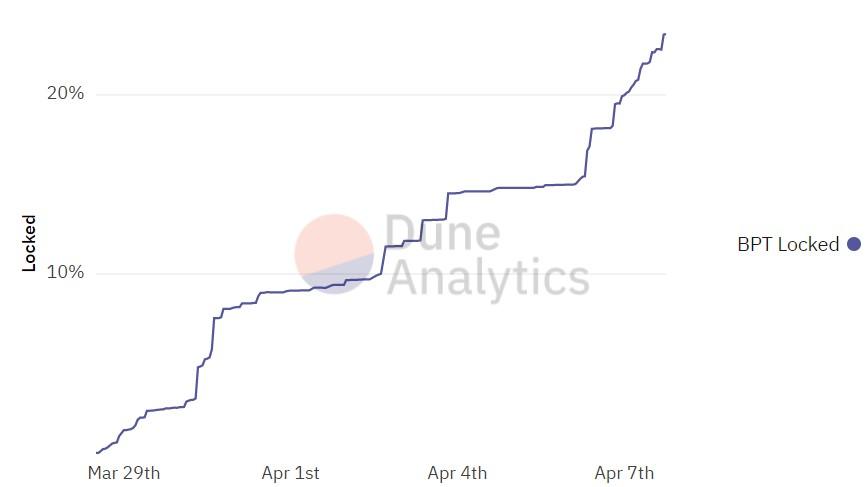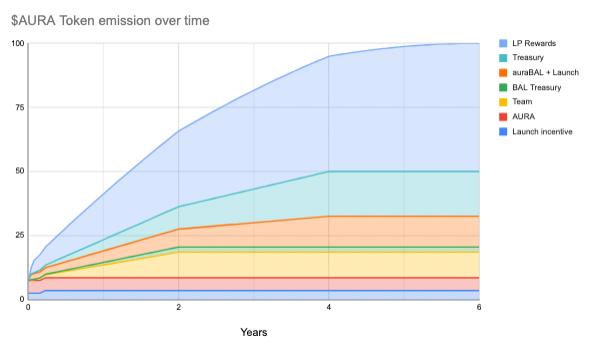Unleashing the "Balancer War" of BAL? A Quick Read on 0xMaki's New Project Aura Finance
Author: 0xMaki
Compiled by: foresightnews
On March 28, the veBAL mechanism, referencing the "CRV-veCRV" token economics, was officially launched on Balancer. Users can lock BPT (Balancer Pool Token, the liquidity token certificate of Balancer's liquidity pool) from the 80/20 BAL/ETH pool to obtain veBAL, thus deeply binding the governance rights, protocol dividend rights of Balancer V2 with veBAL.

Since the launch of veBAL 10 days ago, over 23% of veBAL has been locked.
On April 8, SushiSwap co-founder 0xMaki initiated a proposal on the Balancer governance forum titled "Allowlist Aura Finance in Balancer VotingEscrow," officially launching his new project Aura Finance, which is based on Balancer's yield governance.
To some extent, Aura Finance's positioning in relation to Balancer is quite similar to that of Convex to Curve. So what kind of model design does Aura Finance have, and can it replicate the "Curve War" to ignite the "Balancer War" over BAL? Let's take a closer look at this proposal.
Overview
The proposal suggests whitelisting Aura Finance in the Balancer voting escrow contract, allowing Aura Finance to lock veBAL (in the form of 80/20 BAL/WETH BPT) to participate in Balancer governance and provide additional AURA rewards for participants in the Balancer ecosystem, without the need to immediately handle BAL rewards.
Details
Aura Finance is a new protocol built on the Balancer system that maximizes incentives for LPs and BAL stakers on Balancer by aggregating users' BAL deposits and Aura's native token AURA.
For BAL stakers, Aura creates a tokenized wrapped token, auraBAL, providing a seamless usage flow for veBAL:
The auraBAL token represents the longest locked 80/20 BPT in the VotingEscrow. Users can stake BAL in Aura to earn existing bb-a-USD reward income on Balancer (Note from Foresight News: the BPT consists of USDT, USDC, DAI, and aUSDT, aUSDC, aDAI, which can be distributed as protocol fees to veBAL stakers).
Additionally, it includes BAL distribution income and extra AURA rewards provided by the Aura system, and users can always trade the auraBAL token back to BAL through the BPT deep stable pool.
For liquidity providers (LPs), Aura eliminates the complexity of the Balancer Gauge boosting system, providing a smooth usage flow for all Balancer liquidity Gauge deposits—Aura allows LPs to enhance high yields through the veBAL owned by the protocol while accumulating additional AURA rewards.
The BAL locked in Aura will stop circulating, aligning with our goal of consistency with the DAO.
Token AURA and Governance
Aura Finance also proposes to use the AURA token as a governance and incentive tool within the ecosystem. Locked AURA tokens will have governance rights within the system and can use the protocol-owned veBAL voting rights to vote, thereby creating a prosperous AURA ecosystem on Balancer.
At the same time, with increased power comes increased responsibility. This is a significant economic force, as it effectively controls the liquidity of Balancer incentives for the next 20 years. Therefore, this control must be fully decentralized. Aura has already added voting delegation in the system to make this process completely on-chain. Once the voter base is sufficiently mature, control will shift from a 4/7 multisig to a set of on-chain contracts.
Aura's Voting contract supports EIP1271, meaning that the results of on-chain voting can be forwarded to Snapshot to participate in Balancer governance. This transition should occur after the Aura voting contract has been practically tested and the voter base matures (3-4 months after launch).
Without going into too many details, here is a quick overview of AURA distribution:
- 50% proportionally rewarded to BAL received through Balancer LP on Aura;
- 10% allocated to the auraBAL/BPT liquidity pool, released over 4 years;
- 5% rewarded to the Aura/ETH liquidity pool;
- 17.5% belongs to the treasury;
- 2% used to guide incentive token holders;
- 0.5% distributed to voters of this proposal (authorized voters);
- 1% for future incentives;
- 2% for the BAL treasury, released over two years;
- 2% for system guiding incentives;
- 10% for Aura team incentives, released over two years;
- 100% fairly launched, with no VC or seed investors;
The AURA release schedule is as follows:

Team
The Aura team consists of DeFi builders and pioneers with a strong track record of delivery. Aura Finance is currently undergoing an audit by Peckshield and plans to conduct two more audits with top firms.
Proposal Specifications
It is recommended that the Balancer multisig add a smart wallet checker to the contract, and subsequently, after the proposal is successful, whitelist the veBAL deposit contract provided by Aura Finance. The Balancer team will manually review this contract before whitelisting.
To maintain 100% fair issuance of Aura and eliminate venture capital risks, it is suggested that the Balancer treasury DAO provide a grant of $300,000 to the Aura treasury to cover audit costs and for further security measures.









